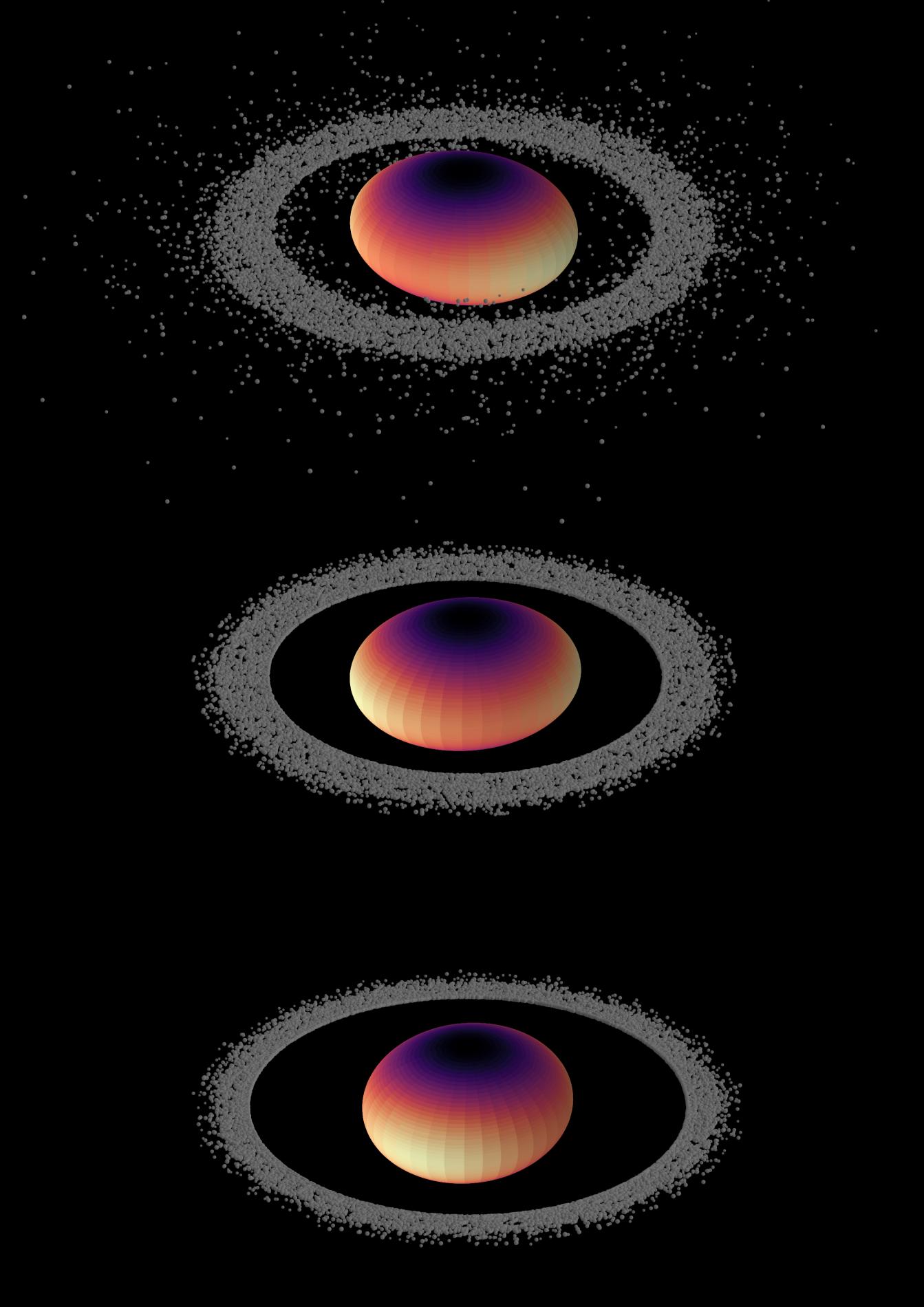The complex dynamics of the miniature ring systems of the Solar System
The finding of rings around Solar System bodies that are not planets, such as the dwarf planet Haumea or the centaur Chariklo, showed that these are more common structures than previously thought. A work, in which the Institute of Astrophysics of Andalusia (IAA-CSIC) participates, analyzes the complex dynamics of these miniature rings
Until just five years ago it was believed that rings were exclusive features of the giant gas planets, such as Saturn or Uranus, but the finding of rings around non-planetary bodies of the Solar System forced us to review these structures, apparently more common than previously thought. Now, a work with the participation of the Institute of Astrophysics of Andalusia (IAA-CSIC) has analyzed the dynamics of these miniature ring systems, more complex in some cases than those of giant planets due to the orography or the elongated shape of these bodies.
In 2013 and 2017, respectively, two bodies of the Solar System entered the small group of objects with a ring: Chariklo, the largest of a population of objects known as centaurs, which lie between Jupiter and Neptune and share characteristics with both comets and asteroids; and Haumea, an ellipsoidal dwarf planet located beyond Neptune with a size, on its larger side, similar to that of Pluto.
DYNAMIC COMPLEXITY
Both show narrow and confined rings, suggesting the existence of "shepherd satellites" that contribute to the ring confinement, such as those observed around Saturn and Uranus. However, there is an important difference between giant planets and non-planetary bodies, since the latter can show very irregular shapes: they can present reliefs, such as craters or mountains, non-existent in gaseous planets, or show an elongated shape (Haumea, for example, has a flattened shape like a rugby ball).
"In this work we show that these deformations or irregularities create gravitational resonances between the body and the particles of the ring. Due to this, the synchronous (or corotation) orbit, in which the particles have an orbital period equal to the rotation of the central body, is empty: the particles of the disk that are inside the corotation fall towards the central object and, on the contrary, those that are outside are pushed outside, beyond the resonance 1:2 (in which they complete a revolution around the body in the time it turns twice on itself)", says Pablo Santos-Sanz, a researcher at the Institute of Astrophysics of Andalusia (IAA-CSIC), who participates in the work.
The timescales associated with the migration of the disk particles are small, of a few years in the case of elongated bodies, such as Haumea. For a spherical body with a five-kilometer equatorial mountain, the corotation zone can be emptied in less than a million years, a very short period of time compared to the age of the Solar System.
These conclusions are confirmed in the known objects: the rings of Chariklo and Haumea are at 400 and 2290 kilometers, out of their resonances 1: 2, which occur at 300 y 1750 kilometers respectively.
Another prediction of the work presented affects the rotation of the body itself, which must be fast so that the particles at that distance are kept forming a stable ring or, otherwise, would be expelled further, to end perhaps forming satellites. For icy bodies such as Chariklo and Haumea the period of rotation must be less than seven hours, something that is also fulfilled, since they rotate every seven and four hours, respectively.
"This is still a new field of study, since until five years ago we did not know that these objects could present rings. These mechanisms could also explain the formation of satellites around certain bodies, through the migration of a disk initially closer to the object", concludes Pablo Santos-Sanz (IAA-CSIC).

B. Sicardy et al. "Ring dynamics around non-axisymmetric bodies with application to Chariklo and Haumea". Nature Astronomy, November 2018.
Instituto de Astrofísica de Andalucía (IAA-CSIC)
Unidad de Divulgación y Comunicación
Silbia López de Lacalle - sll[arroba]iaa.es - 958230532
http://www.iaa.es
http://www-divulgacion.iaa.es

